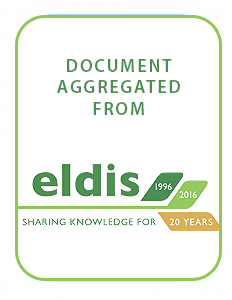Resource information
This paper aims to learn from the household survival strategies in Ethiopia that have evolved to manage diverse disaster hazards with a view that such strategies can inform more effective disaster preparedness, relief, recovery and prevention, policies and interventions.This report describes the systems that are in place that are designed for the early detection of crisis, the nature of humanitarian responses these systems have induced, and the outlook for the coming year.Recommendations arising from the research include:early warning/monitoring information systems need to operate independently of systems for identifying responsesinvestments in systems to assess non-food aid needs are needed in both government and non-governmental institutionsthe current domination of the Food Availability Decline Model of crisis needs to be augmented by other important and context-specific models, including models of entitlement decline, livelihoods crisis, and health crisisNutrition recommendations focus on three broad areas:Systems for prioritizing needs for disaster responseThe need for a broader and more balanced range of strategies to protect nutrition and address all types of nutritional risk especially in priority one areasEnsure the entire range of nutritional concerns in emergencies, are adequately addressed at all levels, including national policy, and within specific Task Forces and sectorsOverall, a stronger commitment by government to addressing emergency public health crisis is important so that in future disasters the health response to emergencies can match the robustness that currently only characterizes the food aid response processesBuild an effective health and nutrition early warning systemDevelop a minimum level of public health outreach and prevention at the population levelExpand clinical capacity in the countryside to manage serious malnutrition and associated
medical conditionsEnhance the managerial authority and competence of regional health officialsThe saving of livelihoods needs to be recognized as being as important as saving human lives in emergencies. Livelihood intervention strategies need to be oriented towards supporting the range of household assets as well as to the diverse policies, institutions and processes that impact disaster affected
populationsThe author also makes recommendations for marketing, the environment and livestock.


